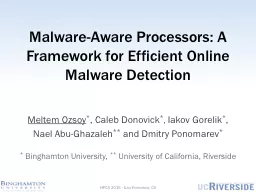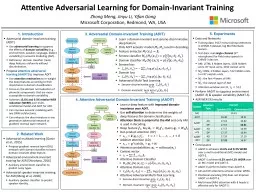PPT-Adversarial Evasion-Resilient Hardware Malware Detectors
Author : calandra-battersby | Published Date : 2018-11-30
Nael AbuGhazaleh Joint work with Khaled Khasawneh Dmitry Ponomarev and Lei Yu Malware is Everywhere Malware is Everywhere Over 250000 malware registered every
Presentation Embed Code
Download Presentation
Download Presentation The PPT/PDF document "Adversarial Evasion-Resilient Hardware ..." is the property of its rightful owner. Permission is granted to download and print the materials on this website for personal, non-commercial use only, and to display it on your personal computer provided you do not modify the materials and that you retain all copyright notices contained in the materials. By downloading content from our website, you accept the terms of this agreement.
Adversarial Evasion-Resilient Hardware Malware Detectors: Transcript
Download Rules Of Document
"Adversarial Evasion-Resilient Hardware Malware Detectors"The content belongs to its owner. You may download and print it for personal use, without modification, and keep all copyright notices. By downloading, you agree to these terms.
Related Documents














